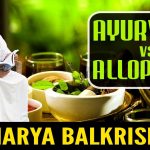Scientific Ethos of Hindu Scriptures
Scholars are damaging the great scientific knowledge enshrined in our scriptures including use of weapons of war, which could match any weaponry of today. As an example in the serials like Ramayan and Mahabbharata they are showing the weapons as only bows & arrows (Dhanush and Teer) and vehicles chariots (rath) drawn by horses (Ashva).

They have depicted the great warriors like Arjun/Ram praying to the Lord and chanting a mantra and suddenly an arrow comes into their hand and they fire it causing destruction. This is against all logic. Look at the stupidity, on one side it is said there was aeroplanes, which is correct, (Vimaana Shastra written by Rishi Bharadwaj) and on the otherhand fighting was done by bows and arrows and vehicles drawn by horses.
Why this contradiction?
Again the reason is translation done in Sanskrit, which is restrictive and not Bhaasha (The language of the Vedas which is vast, subject oriented and flexible while Sanskrit is its colloquial derivative). We are giving you a few examples of weapons actually used in the Mahabharat war:-
1. Teer (arrow)
2. Dhanush (Bow)
3. Rath (Chariot drawn by Horse)
4. Ashva (Horse)
5. Vaahan (carriage)
6. Sudarshan Chakra (Lord Krishna’s weapon of mass destruction)
7. Brahamastra (a very strong arrow)
8. Agni baan (arrow with fire on the tip)
9. Gajendracharmvasna (clothes made of elephant skin)
10.Mantra
Etymology of Ancient words
1. Teer – Etymology tari – Tarati baan means very fast flowing weapon, say a missile/bullet.
2. Dhanush – (Dha – Dhaarne) Dudaanj on which something is placed and fixed like a launching pad for a missile.
3. Rath – etymology is Ramate Yasmin Yen Vaasa rath – a vehicle on which you can travel and roam around can be a chariot, a car etc.
4. Ashva – Denotes horse power so it is the horse power of vehicles and not a horse.
5. Vaahan – normally means a vehicle of travel but so is a rath, so what was the difference?
The etymology of vahan is vaa + han. Vaa gatow means motion and Han is hinsa gatow, very fast motion. These were vehicles which would travel very fast, supersonic like supersonic jets etc /Space crafts. While rath were normal vehicles like cars etc.

6. Sudarshan Chakra – Normally this has been depicted as a good looking chakra (ring) around Lord Krishna’s finger. How absurd as this weapon was of mass destruction and feared by one and all. Normal meaning of this weapon is Su – Good DARSHAN = is looking and CHAKRA = round ring.
The real etymology is Su = Shoodh, To create Darshan – Root Drisher – Prekshane. Prishu- Daahe Strike/destroys and burn, Chakra – Chak is Pratighate, tremendous striking power. So, it was a weapon of mass destruction when used it would decimate and create annihilation. The use of this weapon was his specialty.
7. Agnibaan – Agni means fire but etymologically it is AGI which propels further and also heat. So, a missile (teer) which had tremendous energy of heat etc.
8. Brahamastra – It is said it was given to be very few and it could be used only once as it created total annihilation and destruction all round.

Etymology of word as is Asu – kshepane – strike. Now all bullets/ arrows/ missiles strike the object and destroys it and also get destroyed after striking it.
The bullet/ missile etc ends there. The Brahamastra was a very different Astra. The etymology is braham – brih is the root mean which mean to grow to greater and to greater heights. So, this was that missile which when struck an object/ building etc. It did not end there.
It started to grow and create destruction in all the surrounding areas like a MUSHROOM expanding and causing destruction for miles around this was an atomic bomb. Also It could be used only ONCE and could be given to very selected few, because of its destructive nature.
9. Gajendracharmvaasna – It is said that in the Mahabharat clothes worn by the soldiers were made of Elephant hyde. Gaj normally means sound like that of an elephant very high sound/ waves which even split the stones.
But the etymology of the word also means TRIPTIYOGE. Meaning Fully Charged Here it means that the soldiers wore clothes which were fully charged with energy and which were protective.

10.Mantra – etymologically means MANAN – TO THINK so there was no question of praying to God and their reciting a mantra and being bestowed with some arrow.
Pradhan Mantri is also derived from the word mantra meaning thinker. Another point to be noted is that in the present Mahabharat serial they are depicting that Lord Krishna creating a sunset by using his Sudarshan Chakra in hiding the sun.
This again is illogical, so also the case of Draupadi being undraped and the saree continuing to flow. One must realize Krishna was a great scientist/scholar of arts and science so in both these cases it was MASS HYPNOTISM by which he created these illusions.
Don’t forget Duryudhan had called Krishan Maayaavi. You can see the gross injustice done to our scriptures.
If you analyze from the above they had the best of weaponry including atomic weapons, vehicles which were high powered like tanks and supersonic planes, armament which protected the soldiers which were energized to protect them.
I hope scholars/Producers who make Mahabharat/Ramayan serials will depict the wars etc on the above scientific explanation to avoid pseudo intellectuals in India and abroad who laugh at such serials as are shown today. It will be a “shut up call” for them as now they will comprehend the actual weapons used in this war
Writer : Shri Daksha Bharadwaj
- Email : dakshbba@gmail.com









